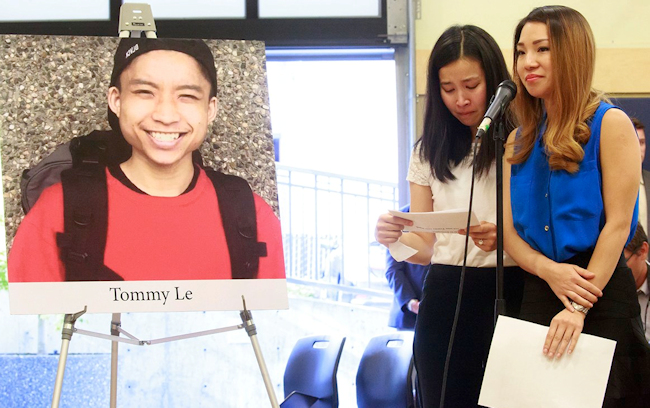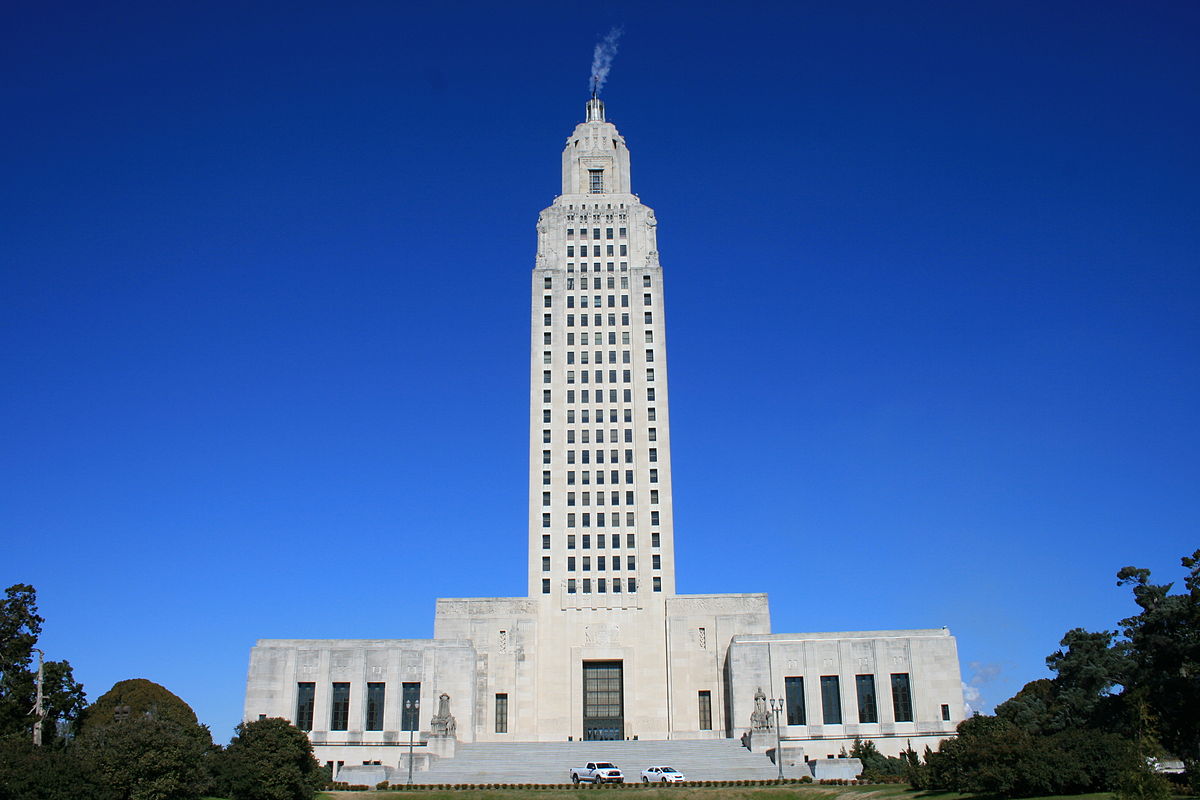
On June 14th, twenty-year-old Tommy Le was shot and killed just outside of Seattle, Washington by King County Sheriff’s deputy Cesar Molina. After the shooting, Molina insisted that Le was shot for approaching police aggressively while wielding an object that appeared to be a knife, and that Le further refused to comply with officer orders to drop the weapon.
That version of events is now in serious doubt after an investigation revealed that Le was actually holding a pen, not a knife, when he was shot and killed; and now, an autopsy of Le’s body further shows that Le was actually shot twice in the back, and a third time in the back of the hand. Those findings are incompatible with Molina’s insistence that Le was approaching police when he was killed.
Finally, toxicology reports show that Le was not under the influence of any drugs or alcohol. Although it remains possible that Le was suffering a mental health crisis at the time of his killing, Le’s family say that he had no history of mental illness.
The confrontation began on June 14th following several calls to police that Le was outside of his home (check that) causing a public disturbance and menacing people with a “sharp object” that bystanders thought might have been a knife. Moments after police responded to the call, Le was dead of three gunshot wounds, even though he was clearly unarmed and police could have taken non-lethal steps to deescalate the situation. Heartbreakingly, Le was killed on the same day that he was to receive his high school diploma from South Seattle Community College; he had just completed a high school degree program associated with the college.
Le’s story reminds of the 2006 shooting of Fong Lee — a 19-year-old Hmong American teenager living in Minneapolis who was also shot and killed by police while riding his bicycle. To defend the shooting, police insisted that Lee was a gang member and that he was threatening police with a gun. However, later investigations show that Lee and his friends were approached by an “overaggressive” rookie police officer on the evening of July 22, 2006, who — for unclear reasons — began pursuing Lee, convinced that Lee had a gun. Yet, surveillance camera footage show that Lee was empty-handed when he became scared by the pursuing officers’ patrol car, and he dropped his bicycle and began running. Officers chased down Lee and shot him eight times. Lawyers for Lee’s family later argued that the gun found by his body — which lacked any fingerprints, sweat, or other smudges — was likely planted by responding officers, including one who had written a burglary report on the same gun two years earlier.
Since the shooting death of Michael Brown in 2014, the nation has been forced to contend with its long-running epidemic of excessive violence disproportionately committed by law enforcement against people of colour — and in particular Black people. The Guardian reported that in 2016 Black people were more than twice as likely to be killed by police than Whites or Asians; Hispanic and Latinx people, as well as Native people, were also significantly more likely to be killed. Ethnic disaggregation of the data published by The Guardian further show that of Asian Americans who are killed by police, victims are disproportionately South and Southeast Asian Americans, like both Fong Lee (who was Hmong American) and Tommy Le (who was Vietnamese American). Indeed, Middle Eastern and South Asian Americans are 3.5 times more likely — and, Southeast Asian Americans are nearly six times more likely — to be killed by police compared to East Asian Americans.
(Police also have an abysmal track record when it comes to handling confrontations with people who may be suffering from temporary or chronic mental illness; far too often, encounters with police result in the deaths of people suffering mental health crises.)
The influence of racial bias on the outcomes of police encounters is an issue that all communities of colour must unite to fight against, and it is a phenomenon that directly affects certain ethnic groups within the Asian American community. Indeed, lawyers for Fong Lee’s family uncovered evidence that Officer Jason Anderson — who killed Lee — had previously made derogatory statements against Asians; and yet, judges refused to consider this finding in court.
To make matters worse, last month the Trump administration rolled back Obama-era rules against the sales of military-grade weaponry to local law enforcement. When police are already more likely to wound or kill men and women of colour, any further militarization of local law enforcement can only exacerbate the problem, resulting in even more deaths of Black and Brown civilians at the hands of police.
Despite this abysmal reality, our courts remain biased in favour of law enforcement officers — and therefore, biased against the victims of excessive and unnecessary police violence. Police officers are rarely tried or convicted for their parts in the killing of (often unarmed) civilians, and those found guilty receive mere slaps on the wrist. Such was the case for Fong Lee: the officers involved in Lee’s shooting escaped justice in both criminal and civil court.
Now, the family of Tommy Le is also seeking justice for Le’s death at the hands of King’s County Sheriff’s Department officers. Yesterday, lawyers for the family announced that they have filed a wrongful death lawsuit against the King’s County Sheriff’s Department.
https://twitter.com/stevenjhsieh/status/905849314273931264
We can only hope that in the more than ten years since Fong Lee’s murder, and in the three years since Michael Brown’s and Akai Gurley’s killing, that the moral arc of the universe has managed to bend just enough to make justice possible for Tommy Le; because, when faced with a system stacked so highly against people of colour when it comes to state-sanctioned violence, sometimes all we have left is hope, and the will to keep fighting the good fight.
Said lawyers for Le’s family at yesterday’s press conference, the reason they filed the lawsuit was to “vindicate the rights” that inspired their immigration from Vietnam to this country in 1991: the belief in “the right to be free from excessive violence.”
Here is a YouCaring fundraiser set up for Tommy Le’s family to help cover legal expenses in their fight against the King’s County Sheriff’s Department. The fundraiser has currently raised just over $14,500, and I hope you will join me in donating additional funds to the family to find #JusticeforTommyLe.

